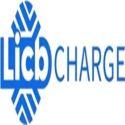Notifications

6 minutes, 8 seconds
-44 Views 0 Comments 0 Likes 0 Reviews

The transition from traditional gas pumps to electric vehicle (EV) chargers at fueling stations is a complex and multifaceted process that extends beyond simply replacing one type of fuel delivery system with another. While adding China EV chargers to gas stations may seem like a straightforward solution, the reality involves navigating a range of technological, financial, and business challenges that can make this shift difficult for many fuel retailers.
Most gas stations that have begun offering EV chargers primarily focus on DC fast chargers, which can charge most electric vehicles (EVs) to 80% within 20 to 30 minutes. These fast chargers are designed to emulate the traditional fueling experience by providing a quick and convenient solution for drivers. In addition, some stations offer Level 2 chargers, which are slower but still vital for EV drivers who may be stopping for a longer duration, such as during shopping or dining.
1. High Installation Costs
The upfront cost of installing fast EV chargers can be steep, with expenses ranging from $50,000 to $200,000 per unit. These costs depend on the station’s existing electrical infrastructure. Stations with outdated electrical systems may face particularly high expenses due to the need for significant upgrades, such as adding new transformers or increasing grid capacity. Furthermore, these costs do not cover other considerations, such as lost parking space, maintenance, and payment system development.
2. Uncertainty in Profitability
Unlike the well-established revenue model for fuel sales, the profitability of EV chargers remains uncertain. While gas stations traditionally generate revenue from fuel sales, vehicle services, and retail, the pricing models for EV charging are still evolving. Many drivers expect charging to be either free or low-cost, which puts pressure on gas stations to explore alternative revenue streams, such as retail sales or additional services, to make up for the lower margins from charging.
To encourage the widespread adoption of EVs, increasing the density of EV charging stations is essential. Key strategies for enhancing infrastructure include:
Strategic Location: Installing chargers at locations with high foot traffic or longer dwell times, such as retail centers, office parks, and transportation hubs (airports, train stations), can significantly improve accessibility.
Educational Initiatives: Publicizing the installation of chargers can raise awareness and encourage other businesses to follow suit, thus expanding the overall network.
Boston Consulting Group (BCG) offers several key recommendations for gas stations transitioning to EV charging infrastructure:
Focus on Customer Experience: Gas stations should adapt by enhancing the overall experience for EV drivers. This includes offering amenities such as food, beverages, entertainment, and comfortable seating to make waiting times more enjoyable.
Leverage Partnerships: Gas stations can collaborate with charging infrastructure companies, local governments, and utilities to access financial incentives, such as tax credits and grants, that help offset installation costs.
Enhance the Charging Experience: Stations can differentiate themselves by offering loyalty programs, seamless digital payment options, and rewards to encourage repeat customers.
Several factors need to be carefully considered when installing EV chargers:
Electrical Capacity: Installing high-powered chargers requires significant upgrades to a station's electrical infrastructure. Assessing the existing capacity and planning for necessary improvements (transformers, service lines) is critical to ensure reliability.
Site Selection and Layout: Chargers should be strategically placed to avoid traffic interference while ensuring accessibility for all types of vehicles. Planning for future expansion is also crucial as demand increases.
Regulatory Compliance: Stations must secure the necessary permits and comply with local regulations. Professional assistance is often needed to navigate the permitting process effectively.
As the demand for electric vehicles increases, gas stations will need to adapt. The shift to EV charging infrastructure is not just about replacing fuel pumps; it's about reimagining the entire customer experience and business model. Gas stations that embrace this change will position themselves as leaders in the evolving transportation landscape, balancing profitability with sustainability.
In conclusion, the transition to EV charging stations offers both challenges and opportunities for fuel retailers. By leveraging strategic partnerships, improving customer experience, and focusing on infrastructure investments, gas stations can thrive in the electric mobility era, offering convenient and reliable charging solutions for the growing number of EV drivers.Know more about Google SEO Directory
Diesel Generator Set Gas Generator Set Inverter Generator Containerized Generator Set Silent Generator Set Trailer Mounted Generator Set

